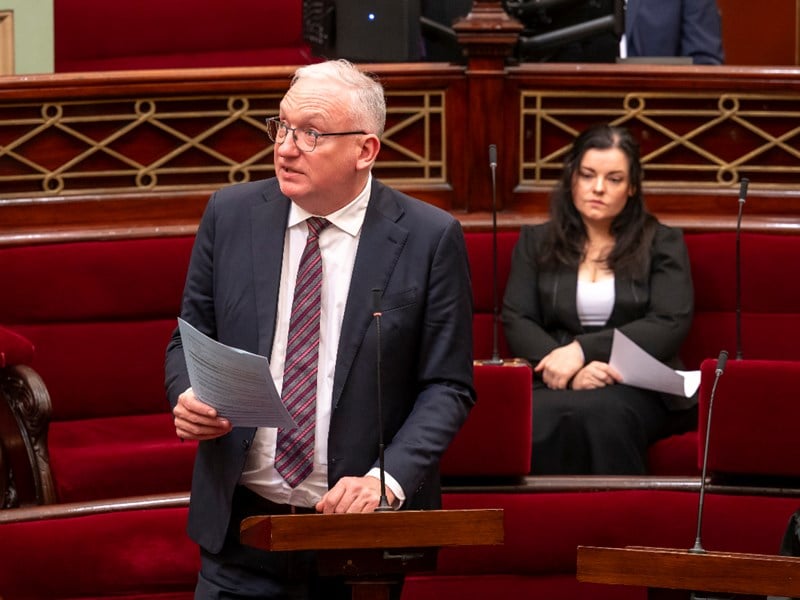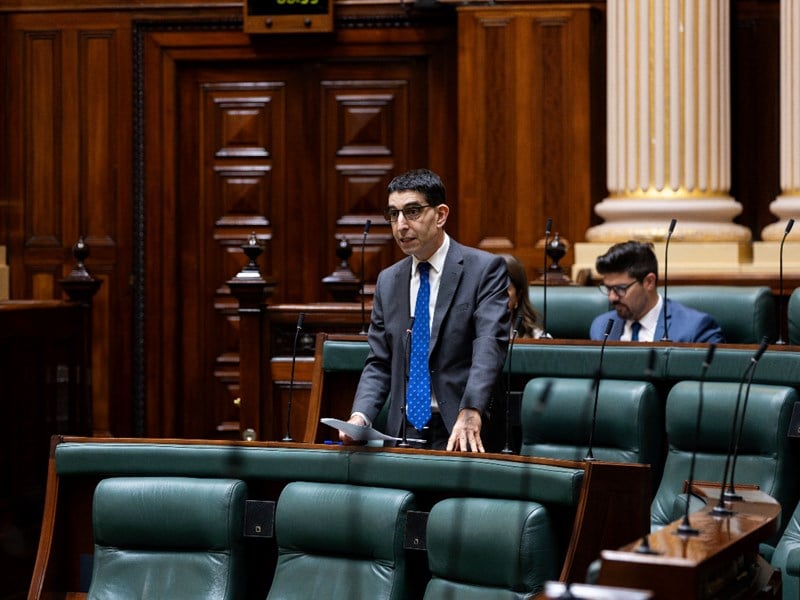Future forward, but user beware
3 October 2025

As the use of Artificial Intelligence (AI) becomes more apparent in Australian workplaces, parliament is no exception with elected members navigating this technological shift.
Thirty-five per cent of Australian businesses have adopted AI or automation technologies as of 2024, according to research conducted by Fifth Quadrant for the National AI Centre highlighting the response of small and medium business enterprises to AI.
For MP Richard Welch, AI has become as common a tool in the office as a stapler.
‘Everybody is already putting their toe in the water, every student is doing it, every business is doing it and that’s whether they are a service business or a manufacturing business. In politics, everyone is using it, and everyone is finding a productivity from it,’ he explains.
A Liberal Member of the Legislative Council for the North-Eastern Metropolitan Region, Welch developed an early form of AI, inventing and patenting motion-tracking technology involving sensors and neural networks, while completing his MBA at Imperial College in London.
Now he is among the first generation of MPs, along with other working Victorians, determining how to approach this new technology.

Libertarian MP David Limbrick, representing the South-Eastern Metropolitan Region in the Legislative Council, utilises AI along with his team in their work for parliament, including as a tool for research, summarising documents and planning.
‘It still needs human oversight. Like a lot of these sorts of tools I can see the potential, but I wouldn’t want to rely on it exclusively,’ he says.
Labor Member for Box Hill in the Legislative Assembly, Paul Hamer is cautious when using AI in his work. Currently he is still ‘exploring it as a tool for research’, however he aims to use it more when it is further developed.
Nationally, only a third of Australians believe the benefits of AI outweigh the risks, according to a 2025 global study led by the University of Melbourne in collaboration with KPMG.
With MPs embracing this technological change, the question arises as to how they will address the concerns many Victorians have, including in relation to ethical and societal implications.
‘In history every disruptive technology was a piece of equipment, and our tax system and businesses were always incentivised to buy a new piece of gear, upgrade the factory as a new way of doing something. The difference here is, for the first time in history the disruptive technology is effectively going to be delivered as a service. You don’t own AI you implement AI,’ Welch explains.

Limbrick and Hamer compare the advent of AI to the evolution of the internet. While they don’t see major implications at this stage, they do have concerns that unregulated technology could have impacts in the future.
In May, during question time in the Legislative Council, Limbrick asked the government about privacy breaches and data security related to AI in the public service.
He specifically mentioned the tool Copilot, because if you give AI ‘access to your systems it can go and look at things that maybe it wasn’t meant to look at’.
In a written response, Government Services Minister Natalie Hutchins advised that the Department of Government Services has developed a Victorian-specific assurance framework based on the national framework.
‘This framework is being used to assess several pilots underway with Microsoft Copilot to test its suitability and safety for use within the Victorian Public Service,’ she wrote.

Public uncertainty and fears over the impact on jobs play into the political dimension of AI, with relevance for the education sector too as students think about their future careers.
As Parliamentary Secretary for Jobs, Hamer thinks the critical component for job security is to ensure that ‘people have the skills and are prepared for the jobs of tomorrow to maximise and utilise AI’.
For more Victorians to use the technology to its fullest, Welch sees the need for people to be better informed about it and to have access to training on it.
‘Collectively as a community and society we have two choices. We either jump on this wave and we ride it and embrace it, or we are going to get hit by it and we’ll be smashed. And by smashed, I mean every other country in the world is doing this, some better than others,’ he says.
Welch emphasises a forward-thinking approach, particularly in relation to the regulatory framework, to ensure that Victoria taps into the productivity and other benefits on offer.
‘For the next 15 years AI going to be the biggest source of productivity growth and that means creating wealth for the next generation, more wealth for less work,’ he explains.
‘Australia is really lucky that we are a federation because it creates healthy competition between states. And it means we don’t work to the lowest denominator, it means if one state does better it can get ahead. There’s a real energy to do it better.’
In relation to the regulatory framework, Hamer sees it is a federal matter that will have to be tackled from a national point of view.
‘The question is where does that balance fall and lie between promoting efficiency and productivity and innovation versus putting some restrictions on what might be an abuse of that power and those tools,’ he says.
As Victorian MPs experiment with and embrace AI, the choices they make now could shape both the state’s economy and the daily lives of all Victorians.
About the Author

Anthea Kalathas
A participant in the Parliament Express program conducted by the Parliament of Victoria in partnership with Express Media. The program provided mentoring and engagement experiences, leading to a series of articles written by young Victorians for the Victorian Parliament's website.